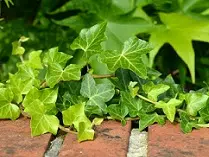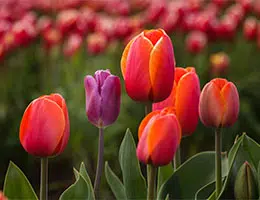 A plant is a living being that does not have locomotor capacity, is autotrophic (produces its organic matter from inorganic elements) and develops photosynthesis (uses sunlight as energy to synthesize organic substances). Perennial , meanwhile, is that which is incessant or permanent; In the field of botany, the term specifically refers to that organism that lives more than two years.
A plant is a living being that does not have locomotor capacity, is autotrophic (produces its organic matter from inorganic elements) and develops photosynthesis (uses sunlight as energy to synthesize organic substances). Perennial , meanwhile, is that which is incessant or permanent; In the field of botany, the term specifically refers to that organism that lives more than two years.
Perennial plants , therefore, are vegetables that survive for at least two years . This characteristic differentiates them from annual plants , which germinate, flower and die in the same year.
Also known as perennials , perennials are often confused with evergreen plants . An evergreen plant, however, is one that has leaves throughout the year , beyond its survival.
In any case, in colloquial language the plant whose foliage remains always green is usually described as perennial: that is, it is not renewed in each season. The precise qualification, however, should indicate that the plant in question is evergreen.
In the case of herbaceous plants, perennial plants do not develop permanent woody tissue but instead produce stems. The growth may arise from a tissue or a rhizome. If they are in a warm climate, it is common for them to grow continuously; However, in those where the seasons are clearly distinguished, they usually bloom when the weather is warm and lose their foliage in the colder season.
Let's think, for example, about areas where there are usually frosts with some regularity: generally, their perennial plants develop and flower only throughout the spring and, especially, the summer. If temperatures were mild throughout the year, however, flowering would occur every month.
Although the notion of perennial plant is often applied to herbaceous plants and shrubs , botany accepts the term to name larger trees. This is because the idea is related to living two or more years, and not to other characteristics.
Perennial plants bloom every year throughout various seasons and produce brightly colored petals that attract pollinating insects, so their function is very beneficial for the species around them.
 The roots of a perennial plant are designed in such a way that they can absorb nutrients and water from the soil much more skillfully than those with an annual or biennial cycle, those that only live one or two years.
The roots of a perennial plant are designed in such a way that they can absorb nutrients and water from the soil much more skillfully than those with an annual or biennial cycle, those that only live one or two years.
By observing the growth characteristics of a perennial plant we can classify it into several types. Bulbous plants receive their name because they have a bulb (generally, underground) whose function is to produce roots that are responsible for absorbing the nutrients necessary for their development. It is thanks to this living organ that they can stay alive for longer than others, although some bulbous plants do not exceed a few weeks.
The reproduction of these perennial plants can occur through the production of seeds or small bulbs that emerge from larger ones. Among the best-known species we can mention the tulip , the leek and the onion.
On the other hand, there are herbaceous plants, which stand out for being present in almost all orchards and gardens. Its stems are green, yellowish or reddish and its development is remarkably rapid. Its flowers are often used for ornamental purposes. Three such perennials are poet's carnation, echinacea, and gazania.
